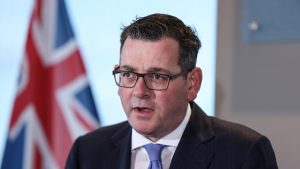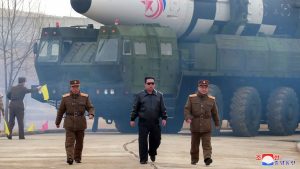Wholesale energy prices have surged as low rainfall and wind speeds reduced the output from crucial renewable sources, forcing Australians to use more expensive fossil fuels.
New data from the Australian Energy Market Operator (AEMO) released today showed wholesale costs increased by 23 per cent in the June quarter compared to the same time last year.
That was the result of lower wind and hydro energy output due to unoptimal weather conditions, forcing increased use of the more expensive gas and coal power as demand rose during early-winter cold snaps.
EXPLAINED: ‘Referendum’ on energy looming after nuclear announcement
“Colder weather has driven a new record for total electricity demand in the NEM for the June quarter,” AEMO CEO Daniel Westerman said.
“On the east coast we have seen low temperatures and persistent cold snaps, especially in Victoria, which have driven higher morning peak demands through the tail end of autumn and the first month of winter.
“Extended periods of low wind have led to reduced wind generation output which was down 20 per cent from last winter… with wind availability down to their lowest levels since Q2 2017.”
READ MORE: 150,000 Aussies could lose access to crucial services in 3G shutdown
The federal opposition leapt on the data, claiming it shows the need to add nuclear power to Australia’s energy mix.
But experts have once again poured cold water on the Coalition’s plan, with the Australian Academy of Technological Sciences and Engineering (ATSE) saying small nuclear reactors (SMR) won’t be ready anywhere near the timeframe promised by Opposition Leader Peter Dutton.
READ MORE: Calls for tougher laws after war memorial vandalised for fourth time in months
While the opposition claims it could have an SMR up and running by 2035, the ATSE says the technology won’t be ready until the mid to late-2040s, and that an accelerated rollout of renewables should be prioritised.
“SMR technology could provide low-carbon energy compatible with Australia’s current electricity system, however as an emerging technology, there is considerable uncertainty around commercial viability and some of these potential benefits,” ATSE President Dr Katherine Woodthorpe said.
READ MORE: Birth rate plummets as cost-of-living crisis stops Aussies starting families
“Overall, the associated timescales, expense, skills gap, legal and regulatory barriers, and social acceptance of nuclear power means the technology is high-risk when compared to existing energy options.
“Sourcing either a prototype SMR is a higher-risk proposition for both technical and commercial reasons.
“Non-partisan analysis is required to objectively examine technology readiness and the role of nuclear technology in the long-term.
“However, this should not detract focus from the rapid deployment of renewable technologies that are ready and available here and now.”
links to content on ABC
9News





